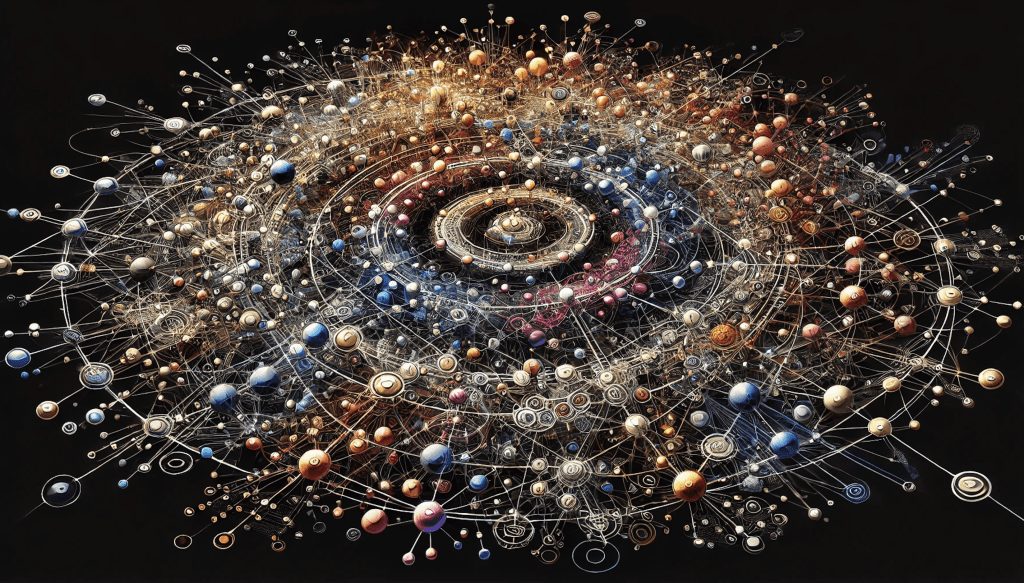In the fast-paced digital landscape of 2024, the concept of the “Echoverse” is redefining brand-consumer interactions. Coined by researchers analyzing extensive datasets, the Echoverse represents the interconnected network of brand communications across various channels, forming intricate feedback loops that shape brand perception and consumer behaviour. This blog post unpacks the Echoverse, exploring its implications for modern marketing strategies and how businesses can navigate this complex environment effectively.
Defining the Echoverse
The Echoverse emerged from a groundbreaking study spearheaded by distinguished researchers Kelly Hewett from the University of Tennessee, William Rand and Roland T. Rust from the Robert H. Smith School of Business at the University of Maryland, and Harald J. van Heerde from the University of New Zealand. Their analysis covered over 18 million social media posts, 5,000 press releases, and 65,000 news articles concerning top U.S. banks—Bank of America, Citibank, JPMorgan Chase, and Wells Fargo—during the tumultuous period from 2007 to 2013. This comprehensive dataset unveiled the dynamic interactions of brand messages across different media, revealing a complex web of feedback loops.
The Three Key Actors in the Echoverse
The Echoverse involves three key actors: firms, consumers, and news media. Each actor contributes to and is influenced by the actions of the others, forming a constantly evolving communications environment. Firms use press releases, Twitter, and advertising to reach consumers; consumers respond via social media platforms like Twitter, TikTok, Instagram, YouTube, Snapchat, WhatsApp, and Reddit; and news media report on these interactions. This creates a reverberating system where all components influence each other.
The Dynamics of Feedback Loops and Sentiment
Negative Feedback Amplification
The study found that negativity tends to amplify within the Echoverse. Negative news articles often lead to negative social media posts, which further propagate negative sentiment across all platforms. This cyclical negativity can significantly impact business outcomes, such as consumer deposits in banks. Understanding these feedback loops is crucial for brands to effectively manage their online presence and reputation.
Channel Influence and Interaction
Traditional media and social media significantly influence each other within the Echoverse. For instance, negative social media posts can lead to more negative news articles and vice versa. However, consumer sentiment surveys had less direct influence on social media content. This highlights the unique role each medium plays in shaping brand communications.
Effective Strategies for Navigating the Echoverse
Embracing Holistic Management
Brands must manage all communication channels as an integrated system rather than in silos. This approach allows for a cohesive strategy that considers the interplay between various media. For instance, a coordinated strategy that integrates traditional media, social media, and corporate communications can create a more unified brand message and prevent disjointed or conflicting information from reaching consumers.
Proactive Consumer Engagement
Direct engagement with consumers on social media can help mitigate negative feedback loops. Brands should focus on consistent, authentic communication that addresses consumer concerns promptly and effectively. Platforms like WhatsApp and Reddit offer unique opportunities for real-time interaction and community building, allowing brands to engage with consumers in a more personal and immediate manner.
Leveraging Predictive Analytics
Investing in predictive analytics and social media monitoring can provide valuable insights into emerging trends and potential issues. This proactive stance enables brands to anticipate and respond to changes in consumer sentiment before they escalate. Tools that analyze data from various platforms, including YouTube and Snapchat, can help brands identify patterns and adjust their strategies accordingly.
Integrating AI and Internet Technologies
The internet and AI tools are transforming marketing communications within this complex, interactive landscape. In this environment, a diverse network of human and nonhuman actors—including consumers, brands, AI agents, and more—continuously interact, influence, and reshape messages across digital platforms. Traditional one-way and two-way communication models give way to omnidirectional communication.
The researchers integrated communication theory and marketing communications theories to create a typology of marketing communication strategies consisting of three established strategies—promotion marketing, relationship marketing, and customer engagement marketing—and their proposed strategy, echoverse marketing. They recommend three strategies for marketers to shift from leading messaging to guiding messaging:
- Enable co-creation and co-ownership.
- Create directed learning opportunities.
- Develop a mindset of continuous learning.
Implications for Modern Marketing
Shift from One-to-Many to One-to-One Communication
Understanding the Echoverse is crucial for brands aiming to navigate the modern media environment effectively. The traditional one-to-many communication model is becoming obsolete as consumers increasingly engage in one-to-many interactions through social media. This shift requires brands to adopt more dynamic and responsive communication strategies that can address the fast-paced and interconnected nature of modern digital interactions.
The Role of Traditional and Digital Media
The research highlighted the effectiveness of direct engagement with consumers on social media. For example, Bank of America managed to reduce negative tweets and news coverage by actively responding to customers on Twitter. This proactive approach not only mitigated negative sentiment but also positively influenced customer deposits. Personalized interactions on platforms like Twitter, TikTok, and Instagram can foster positive brand sentiment and loyalty.
Closing Thoughts
The Echoverse presents both challenges and opportunities for brands in the digital age. By understanding the omnidirectional nature of brand communications and the endlessly reverberating feedback loops within the Echoverse, brands can develop more effective and responsive marketing strategies. Embracing this complex yet insightful model will be key to navigating the ever-evolving landscape of modern media.





















